Introduction
The discussion surrounding wind energy development often becomes clouded by misconceptions about land use and environmental impact. Many stakeholders harbor concerns that wind farms require vast expanses of land, potentially leading to detrimental effects on local ecosystems and agricultural practices. However, emerging evidence reveals that wind energy can coexist harmoniously with farming, allowing for dual land use that benefits both clean energy initiatives and traditional agricultural activities.
Additionally, the perception that wind turbines adversely affect property values and wildlife has been challenged by rigorous studies, debunking the myths surrounding their impact. This article delves into the realities of wind farm land use, comparing it to solar energy, exploring land use conflicts, economic considerations, and innovative solutions that aim to minimize environmental impacts while promoting community engagement. By addressing these critical factors, a clearer understanding of the role of wind energy in sustainable development can be established, paving the way for informed decisions that align energy goals with community interests.
Common Misconceptions About Wind Farm Land Use
Misunderstandings about the area use needs for solar farms frequently create uncertainty among stakeholders. A common myth is that energy farms necessitate extensive tracts of land, leading to fears of substantial environmental degradation. However, research demonstrates that energy farms can effectively coexist with agricultural activities. This dual-use method allows farmers to continue their activities for crops and livestock while utilizing clean energy from turbines.
Furthermore, the notion that turbines adversely affect local ecosystems has been disputed by several studies. Correctly located energy farms have been demonstrated to reduce their impacts on wildlife and biodiversity. For example, an examination of 428 energy farms in the United States, which included data from roughly 500,000 property sales within a five-mile radius, revealed that the presence of turbines does not significantly harm property values or local ecosystems. According to Hoen, one of the researchers involved in this study, "It’s extremely important for them to have good information on which to make those decisions."
'Despite a rising disinformation narrative connecting renewable sources to ecological damage, independent fact-checking organizations have refuted many assertions that indicate these installations endanger wildlife.'. 'Misleading stories, such as the claim that turbines threaten reindeer, cows, and marine mammals, have been systematically disproven.'. In truth, these creatures encounter more urgent dangers from climate change, rendering the drive for sustainable power sources such as turbines more essential than ever. The goal remains clear: to promote sustainable power solutions while ensuring environmental integrity.
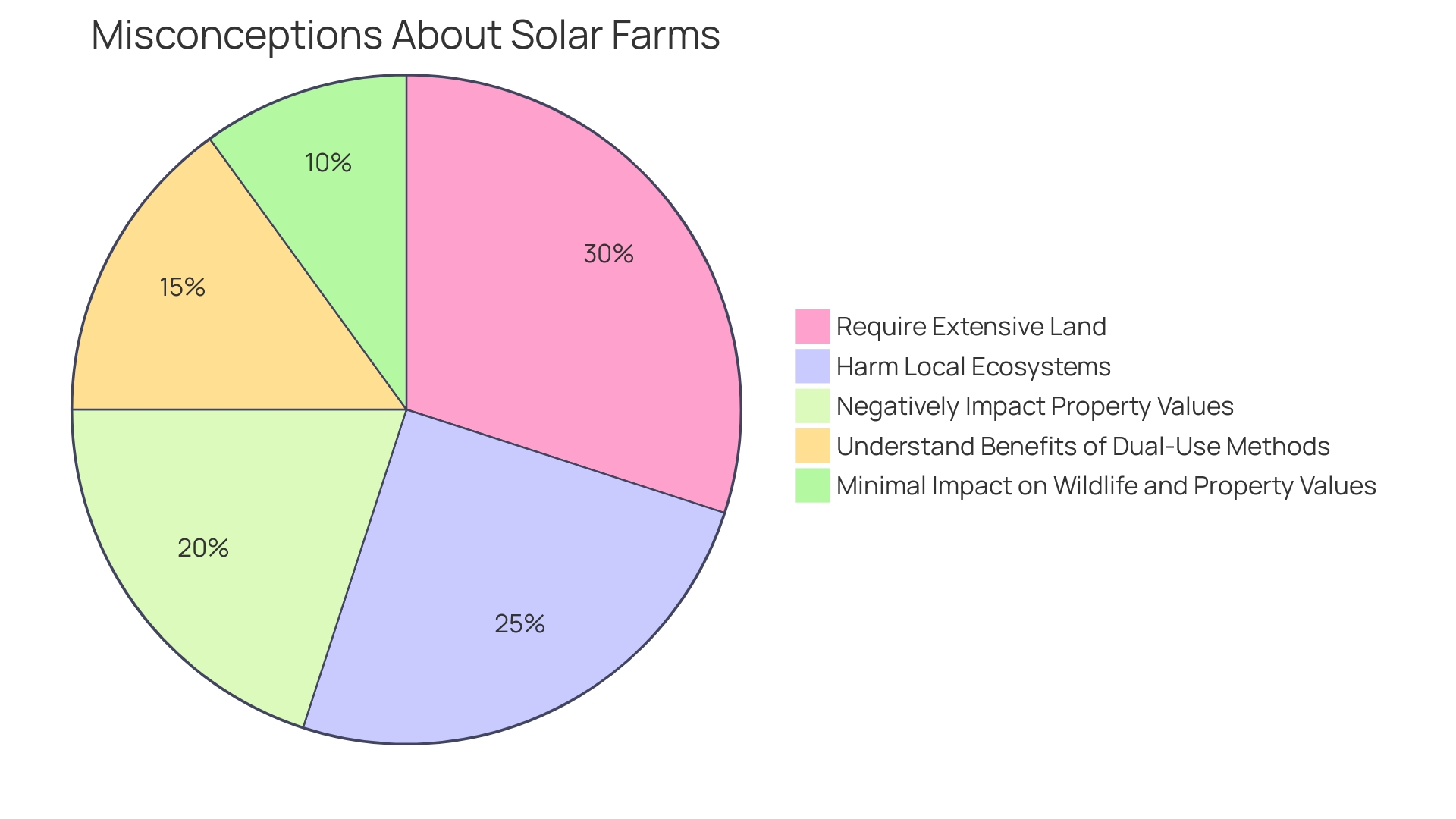
Comparative Analysis: Land Use of Wind Energy vs. Solar Energy
When assessing usage for wind and solar energy initiatives, unique traits arise that indicate their operational needs and environmental impact. Wind farms are particularly efficient in their space utilization, often occupying only about 5% of the area where turbines are installed. This permits dual use of the area, where agricultural activities can continue alongside turbine operations. As a result, wind energy development can coexist with farming, enhancing the agricultural landscape rather than disrupting it.
In contrast, solar farms typically require larger contiguous parcels, with utility-scale solar installations demanding between 5 and 10 acres per megawatt of generating capacity. This expansive area requirement can lead to considerable transformation of space, making it crucial for developers to navigate local constraints effectively. For instance, Inicio emphasizes the importance of integrating solar projects with existing agricultural practices while minimizing disruption to the environment and local communities.
Furthermore, solar setups can be strategically positioned on current structures, such as rooftops, to greatly diminish their spatial footprint. This integration enables solar power to be captured without the extensive terrain alteration linked to ground-mounted solar farms. As the International Energy Agency highlights, solar power is currently the fastest-growing source of new power globally, driven by advancements in technology and the urgent demand for sustainable power solutions.
In the end, the decision between solar and alternative renewable sources is affected by regional circumstances, space availability, and the distinct objectives of the parties involved. In urban areas, for example, wind initiatives may encounter difficulties associated with property values, as research suggests that installations in densely populated counties can adversely affect nearby property values. This highlights the importance of a thorough, context-specific strategy for property acquisition and initiative development, ensuring that both renewable objectives and local community interests are in harmony.
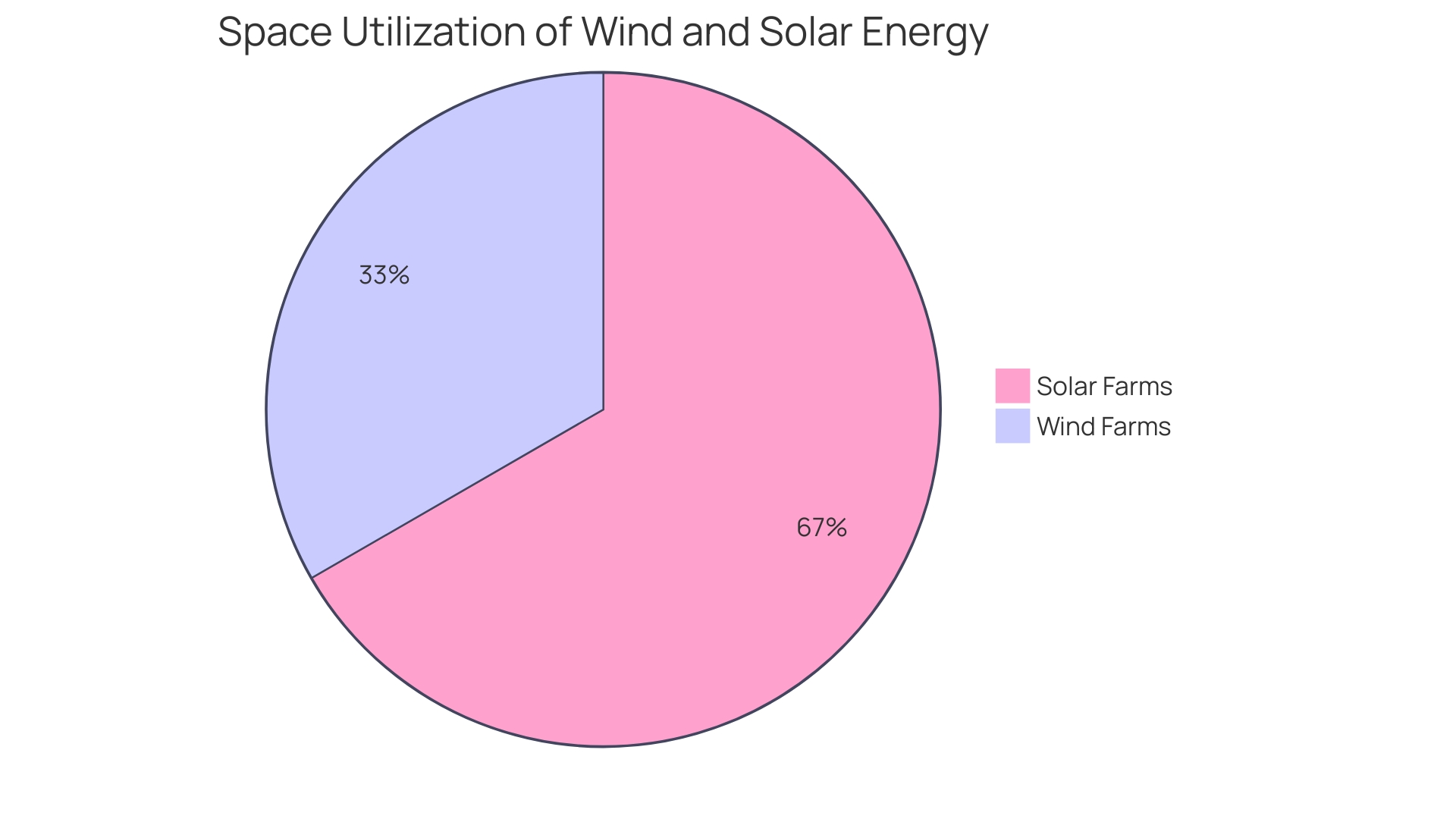
Challenges in Wind Energy Deployment: Land Use Conflicts
'Wind power initiatives often face usage disputes that complicate their execution.'. Competing interests often arise between agricultural land use, conservation areas, and residential development. A significant aspect of this challenge is the local community's response; concerns regarding noise, visual impact, and potential disturbances to wildlife are common. Research indicates that many stakeholders possess valid reasons for opposing specific renewable power facilities based on their design and location.
The renewable resources permitting process across various states often lacks sufficient avenues for opponents to voice their concerns and collaborate with proponents. This disconnect can exacerbate tensions and stall progress in deploying wind power projects. As one expert pointed out, "Many stakeholders have valid reasons to oppose certain renewable power facilities based on how they have been designed and situated."
Effective stakeholder engagement and transparent planning are crucial for addressing these conflicts. By fostering trust and facilitating open dialogue among community members, renewable energy developers, and municipal staff, stakeholders can work together to find solutions that minimize adverse impacts. Approaches such as active listening and consensus-building can connect differences between varying interests, ultimately facilitating the way for successful implementation.
Furthermore, the dynamics of local opposition are multifaceted. A study has indicated that energy initiatives built in metropolitan regions can adversely affect property values, emphasizing the necessity for customized strategies in site selection. In contrast, air energy initiatives in rural areas have shown no such harmful effects on property values. This disparity emphasizes the importance of understanding local contexts and engaging with communities early in the planning phase to mitigate concerns effectively.
In general, tackling usage disputes in renewable power initiatives requires a dedication to cooperation, openness, and community involvement, making certain that the advantages of sustainable sources are conveyed efficiently and that community concerns are emphasized.
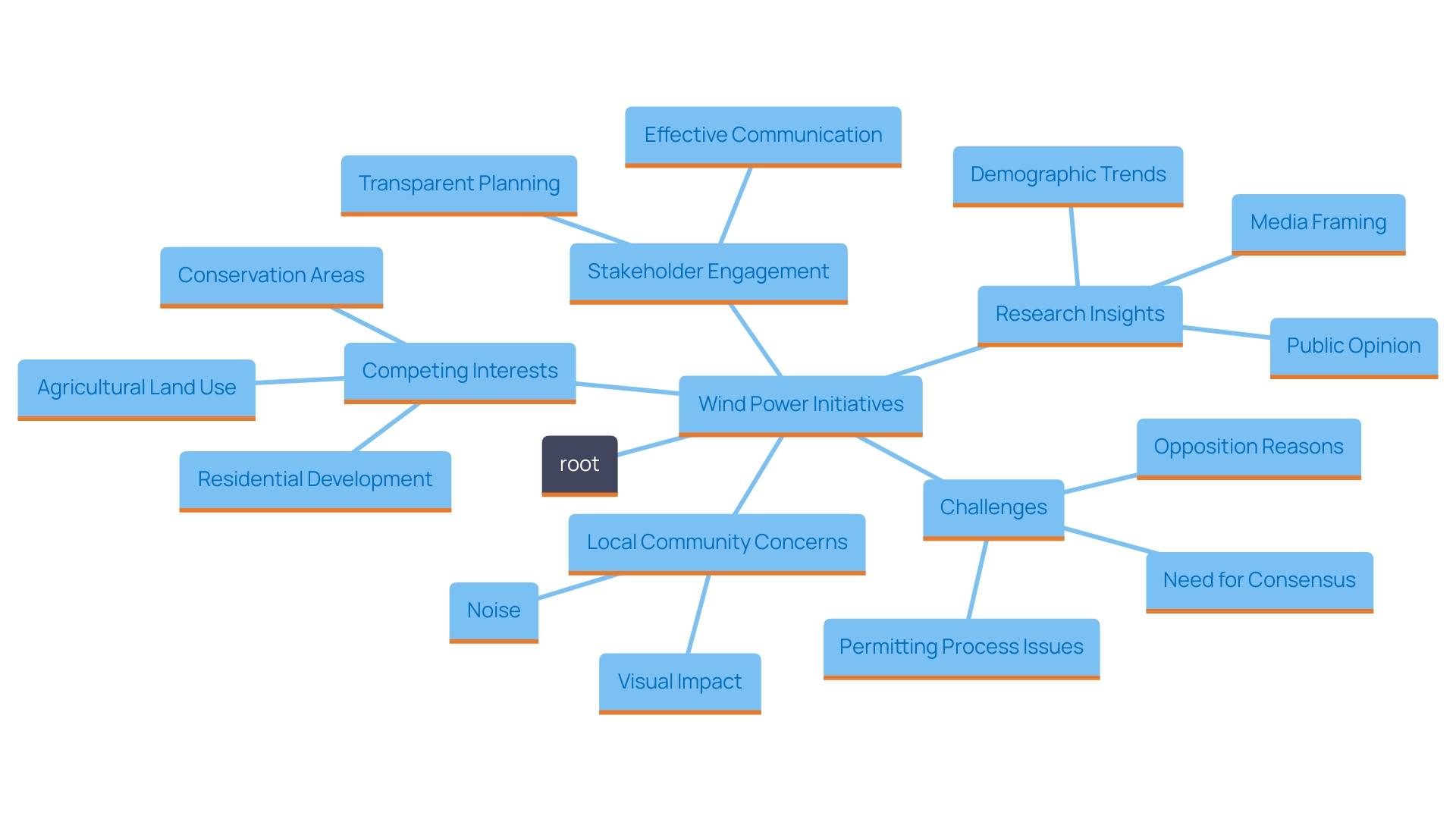
Economic Considerations and Community Engagement in Wind Energy Projects
The economic consequences of wind energy initiatives play a crucial role in shaping land use strategies, with local economies reaping benefits such as job creation and increased tax revenue. For instance, the Lotus Wind Power Initiative in Vietnam generated nearly $90 million for the country’s GDP during its construction phase, illustrating the substantial economic contributions that similar endeavors can make. However, to ensure these benefits are realized, community engagement is paramount. Research indicates that effective stakeholder involvement from the outset can help navigate opposition and align designs with local needs and values.
Especially in city environments, the closeness of turbines to residential zones has raised worries about property values. Studies show that wind projects in urban counties, where populations exceed 250,000, tend to negatively impact property values, contrasting with rural projects, which generally do not affect them. This emphasizes the necessity for renewable resources developers to engage with communities early in the planning process to address these concerns, fostering a sense of inclusion and understanding.
Public sentiment largely favors the expansion of renewable power sources. Nevertheless, opposition remains rooted in legitimate local concerns, especially regarding land use and environmental impact. A recent analysis of the placement of renewable projects revealed that many stakeholders have valid reasons for their concerns, necessitating transparent communication and consensus-building strategies.
Creative technologies and methods can also lessen adverse environmental impacts linked to air current power generation. For example, advancements in recycling turbine blades could address waste management concerns, as the current disposal methods are often more costly. By comprehensively addressing these issues, stakeholders can facilitate more sustainable usage practices, ultimately aligning economic growth with community interests.
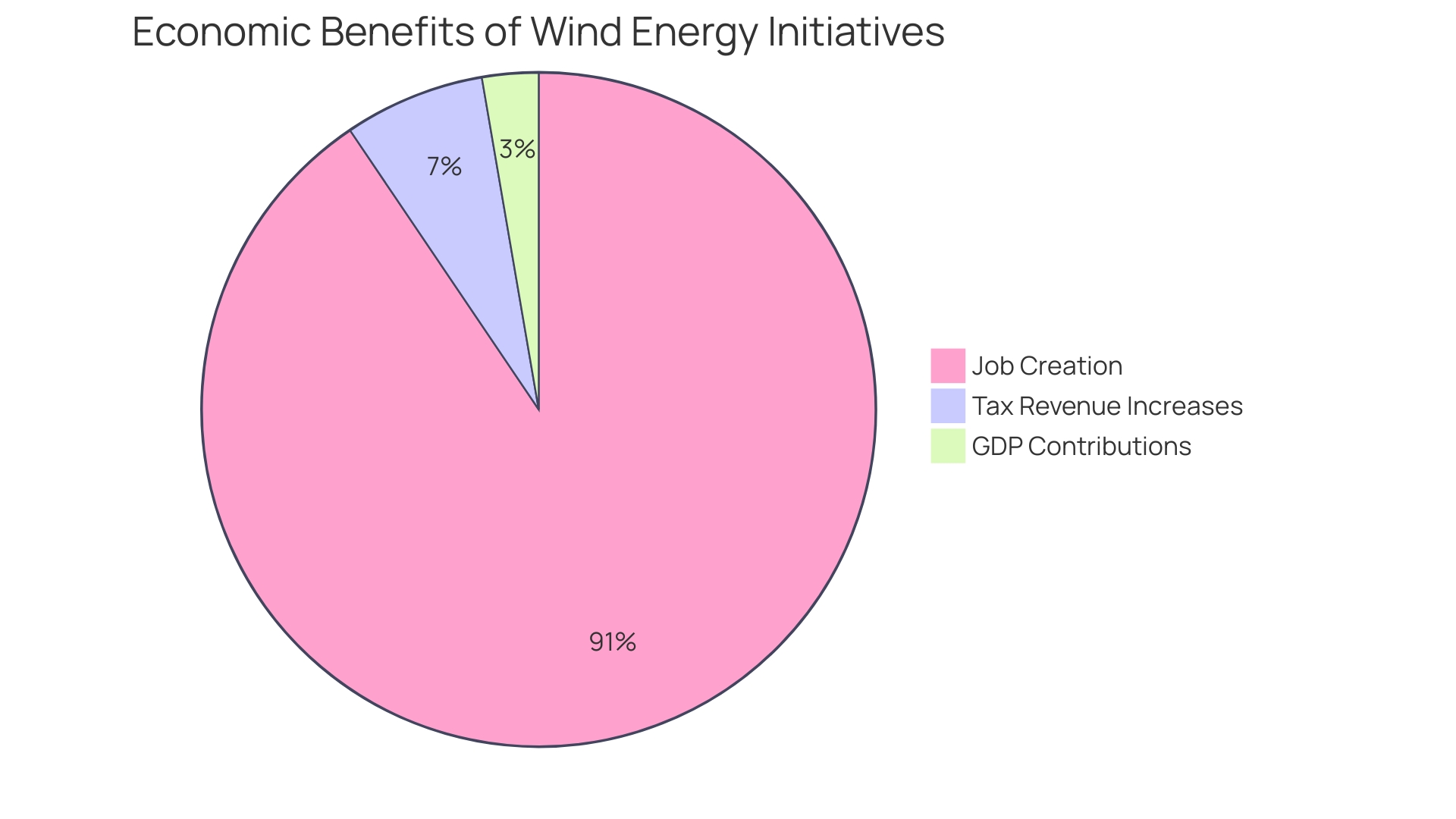
Innovative Solutions for Minimizing Land Use Impacts
Creative approaches are arising to lessen the usage effects linked to air power initiatives, rendering them more ecologically sustainable and financially feasible. 'One notable approach is the concept of multi-use sites, where wind turbines are strategically co-located with agricultural activities or grazing areas.'. 'This integration not only improves resource utilization but also boosts the economic feasibility for local farmers, allowing them to sustain their livelihoods alongside renewable power generation.'.
Recent advancements in turbine technology are also playing a crucial role in minimizing spatial footprints. Contemporary turbines are constructed with smaller foundations and enhanced power capture abilities, enabling a higher concentration of setups without considerably expanding space needs. This technological advancement aids in the implementation of air power in a way that is less disruptive to the ecosystem.
Moreover, strategic site selection is critical in further reducing environmental impacts. By prioritizing previously disturbed lands or underutilized areas for new wind initiatives, developers can mitigate concerns related to land use changes. Studies suggest that such strategic placements can result in greater community approval and diminished resistance, which is crucial for the successful execution of renewable initiatives.
As emphasized by renewable power specialists, addressing local stakeholder concerns is crucial in the shift to clean alternatives. A recent study emphasized that effective engagement with community members results in better outcomes for renewable projects, reducing friction and fostering collaborative solutions. Involving local utilities, municipal authorities, and community leaders ensures that development aligns with community needs, thereby promoting a smoother transition to sustainable energy sources.
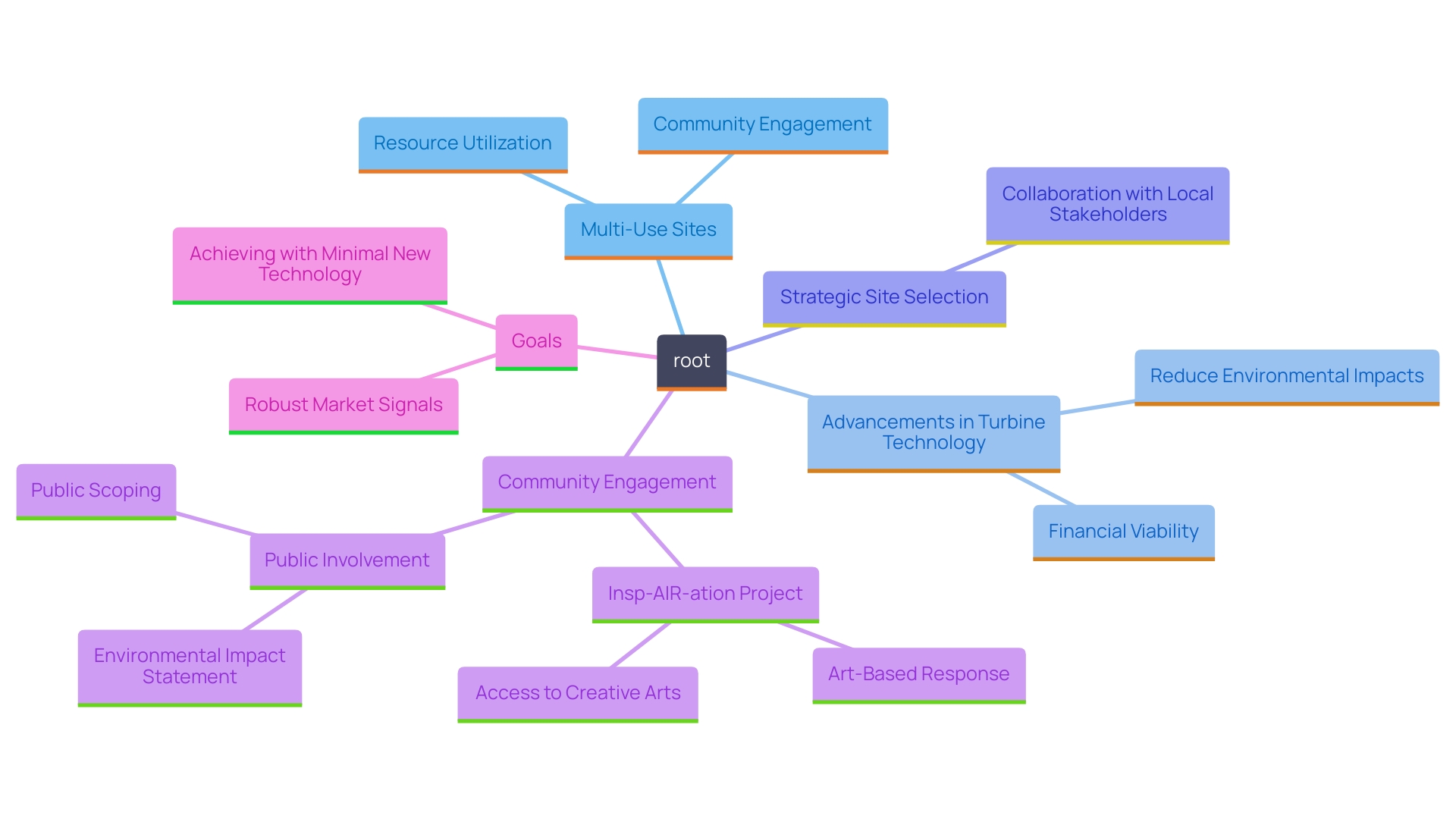
Conclusion
The discussion on wind energy development is often clouded by misconceptions about land use and environmental impact. Contrary to popular belief, wind farms do not require extensive land that undermines agricultural practices. Research shows that wind energy can coexist with farming, allowing for dual land use that is essential in combating climate change.
Wind farms are efficient in their land utilization, occupying only a small percentage of the areas they inhabit. In comparison, solar energy projects typically require larger contiguous spaces, making careful planning crucial to minimize environmental disruption. The choice between wind and solar energy should reflect local conditions and community needs.
Land use conflicts and community opposition underscore the importance of stakeholder engagement. Open communication can address concerns and build trust among different interests. Moreover, the economic advantages of wind energy, such as job creation and increased tax revenue, further highlight the necessity for community involvement from the start.
Emerging strategies, including the integration of wind turbines with agricultural activities and advancements in turbine technology, aim to reduce land use impacts. These solutions not only optimize land use but also enhance local economic viability. Ultimately, the successful deployment of wind energy relies on dispelling myths, engaging communities, and implementing innovative solutions that prioritize both environmental integrity and economic growth.




